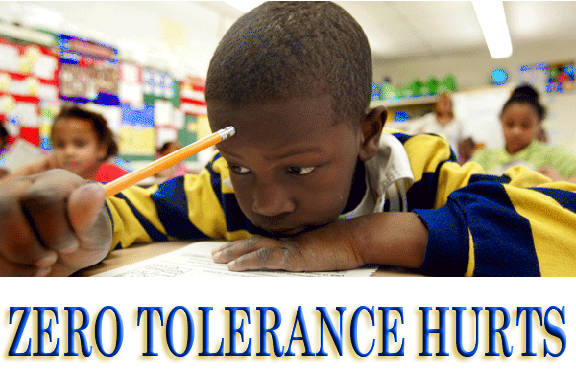By Paul L. Tomas, Ed.D. | Originally Published at The Becoming Radical. December 3, 2013
What do zero-tolerance policies, “no excuses” practices, and grade retention have in common?
They all negatively and disproportionately impact children from poverty, minority children, English language learners, and boys; and nearly as disturbing, all are discredited by large bodies of research.
Is the tide turning against at least zero-tolerance policies? Lizette Alvarez reports:
Faced with mounting evidence that get-tough policies in schools are leading to arrest records, low academic achievement and high dropout rates that especially affect minority students, cities and school districts around the country are rethinking their approach to minor offenses.
Zero-tolerance policies, “no excuses” practices, and grade retention have something else in common: they should all be eradicated from our schools. And thus, here is a reader to help support calls for ending these practices and policies:
- Police in the Hallways: Discipline in an Urban High School, Kathleen Nolan
- Review: Police in the Hallways: Confronting the “Culture of Control,” P. L. Thomas
- The School-to-Prison Pipeline, Journal of Educational Controversy (vol. 7, issue 1, Fall/2012-Winter 2013)
- Hope Against Hope: Three Schools, One City, and the Struggle to Educate America’s Children, Sarah Carr
- New Schools, Old Problems [Review: Hope Against Hope], P. L. Thomas
- Education Reform in the New Jim Crow Era
- Truthout TV Interviews P.L. Thomas About the New “Jim Crow” Era of Education Reform
- Just Say No to Just Read, Florida, South Carolina [includes retention research]
- Implementing Policies to Reduce the Likelihood of Preschool Expulsion, Walter S. Gilliam, PhD
- Prekindergarteners Left Behind: Expulsion Rates in State Prekindergarten Programs, Walter S. Gilliam, PhD
- Henry Giroux on the “School to Prison Pipeline”
- The Mis-education of the Negro, Carter Godwin Woodson
Paul L. Thomas is an Associate Professor of Education at Furman University.
This essay was reprinted by EmpathyEducates with permission or license from the Author.












Leave A Comment